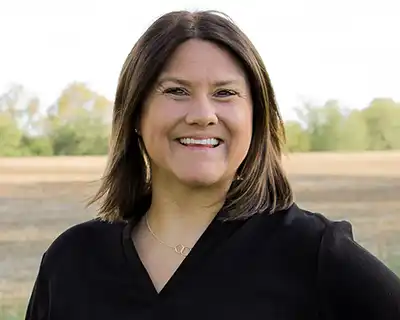Data is critical to the climate-smart economy. Prescriptive-application crop protection and plant health leader AMVAC Chemical Corp. is rolling out solutions to help widen adoption of precision technologies and the data sharing that drives them.
Farm-level production data is critical for precision agriculture and sustainable production systems, but many factors continually stand in the way of farmers willingly handing over that currency.
“It’s human nature to ask, ‘What’s in it for me?’ and farmers are human,” says Rick Rice, Director, Application Technology, AMVAC Chemical Corp. “As an industry, we must make certain that farmers realize value from data they provide and that they’re confident it won’t be used for purposes other than those defined in the data sharing agreement.”
America’s Conservation Ag Movement visited with Rice to discuss what he’s experienced in his career in precision agriculture, what he feels is needed to bridge the data gap and how AMVAC is helping to provide those solutions for farmers.

Director, Application Technology
AMVAC Chemical Corp.
During your time working with farmers in this space, what have you experienced in their attitudes toward data and data-sharing?
I’ve worked in the precision/prescriptive ag space for 15+ years and I’ve learned farmers don’t want to share proprietary data with an entity that will use it to make money unless there’s a clear understanding about how they’ll share the money.
On the other hand, most farmers I’ve worked with are very willing to share data with companies that clearly define the limited purpose for which it will be used, particularly when it’s to improve algorithms that will make a particular type of software work better. Every data system in use by farmers today was designed and tested using data that farmers shared with designers.
How is AMVAC working to provide solutions to growers that help streamline data measuring, monitoring, reporting and verification?
AMVAC’s ULTIMUS® technology is a supply chain tracking tool that will also increase food transparency for consumers throughout the food chain.
ULTIMUS starts with an RFID tag that the crop ag input manufacturer attaches to each container, whether it’s as large as a railcar of fertilizer solution or as small as a pint-sized bottle of pesticide. The RFID tag serves as a certificate of origin confirming the container’s contents, and also allows comprehensive tracking of the container. The tagged SKU is scanned as the container moves through each step of the supply chain, allowing each entity with access privileges to see precisely where it’s located, 24/7. Even if some portion of the contents is transferred from the original tagged container to a different or smaller container, the transfer is recorded and tracked in ULTIMUS.
When a farmer is ready to apply the contents of a tagged container, those contents are transferred through a device that passes to ULTIMUS-enabled application equipment the certificate of origin information from the container’s RFID tag, along with the quantity of product removed from the container in that individual dispensing transaction. When that data is matched with the equipment’s as-applied recordkeeping system, a verifiable application record is produced that can be shared with anyone the farmer chooses.
We frequently hear that consumers want to know where their food came from, but that’s only part of the story. They also want to be confident the crop was produced in conformity with regulated and recommended crop production practices ensuring food will be safe for them and their families. ULTIMUS makes it simple and cost effective for farmers to provide verifiable application records of inputs used to produce crops that go into human and/or animal food products.
I believe ULTIMUS has the potential to change our entire industry, as we make it easy and affordable to provide transparency to consumers, food companies and others with an interest in confident answers regarding who applied what, when and where and at what rate, for every product applied to each field.
Productivity and sustainability must align with profitability to gain adoption on farms. How does AMVAC and your solutions help ensure increased profitability for your customers?
The operative word is solutions. It’s not enough to deliver a break-even solution. The first sustainability test for any farmer is: “Will my profits increase if I use this product?” Every farmer who applies an AMVAC-brand product believes the answer to that question is yes. Because we’re in the business of selling prescriptive solutions, one of our jobs is to help farmers better understand where the “yes” locations are in their fields and, just as importantly, help them avoid applying our products in the “no” locations.
A recent Trust In Food study found 70% of farmers would be willing to start or increase their use of precision farm management technologies if they could be financially incentivized to do so. How is AMVAC solving for this barrier with your customers?
AMVAC was one of the original sponsors of Farm Journal’s American Conservation Ag Movement (ACAM). Through our association with ACAM, we had an opportunity to help draft program rules for the Trust In Food (TIF) Climate Smart Ag Practices grant program that define sustainable farming practices which would qualify farmers to receive cost-share reimbursements. We believe the grant program is a great tool to help farmers implement sustainable farming practices because the reimbursements minimize the financial risk of trying something new. The purpose isn’t to provide a forever subsidy for a particular practice, but instead to act as a catalyst for new conservation practices in particular areas and by individuals who might not risk implementing the practice without a financial safety net. The long-term objective, however, is to allow participants to demonstrate to themselves and their neighbors that new sustainability practices yield positive financial benefits on their own and will continue to do so long after the three-year reimbursement program has ended.
With ACAM and TIF, AMVAC believes the most effective method of marketing to farmers is via word of mouth from farmer peers who have had first-hand experience. This starts when first-year farmer participants in the TIF program tell their neighbors they ought to consider participating in the Climate Smart grant program. After the grant program has ended, that same word of mouth should continue as farmers from the program continue to use those practices knowing they truly are sustainable both environmentally and financially.
There is confusion in the carbon credits market around standards for measuring, monitoring, reporting and verifying data. What is a big step that, you believe, can be taken to provide clarity across the value chain for this issue?
The measuring process is fairly straightforward. Independent entities such as the American Carbon Registry and universities have confirmed that if a farmer does X practice, Y tonnes of carbon will be sequestered, or better, not released into the atmosphere.
The real challenges are with reporting, monitoring, and verifying. Today, essentially all reporting activity requires manual entry along with confidence in the reporter’s integrity and accuracy. I don’t believe there’s a community on earth with higher overall integrity than American farmers, but we’ve all heard about a few bad actors. Even farmers with the very best intentions can make honest reporting errors.
This is why monitoring is an essential element of carbon markets. Businesses that purchase farmer-produced carbon credits demand monitoring because they need to be confident those credits won’t or can’t be reversed in the future. But monitoring, whose only purpose is to identify reporting errors, is expensive because it’s human based, manual, and time consuming. It takes the lion’s share of the value of ag-based carbon credits. Consequently, monitoring all the qualifying farm practices that can generate ag-based carbon credit is just not financially feasible, yet without universal monitoring, verification is impossible. It’s a real Catch-22.
ULTIMUS helps address this dilemma for credit-eligible practices – such as reducing the application rate of synthetic nitrogen fertilizer, or applying nitrogen-fixing supplements or soil health products – by completely automating the verification process.
What is the biggest opportunity that agriculture has right now in terms of accelerating climate-smart work?
I believe the real accelerator will come from reducing greenhouse gases (GHG) linked to use of synthetically manufactured nitrogen fertilizer. All commercially grown non-leguminous crops require supplemental nitrogen, most of which comes from synthetically manufactured nitrogen fertilizer. Though the manufacturing process is improving, the methods used to produce synthetic nitrogen result in significant releases of nitrous oxide into the atmosphere. So, if the number of synthetically manufactured nitrogen units can be reduced significantly, a corresponding reduction in GHG emissions would result, and GHGs not released into the atmosphere won’t have to be sequestered.
Farmers can’t reduce the number of nitrogen units required by their crops without a corresponding reduction in yield. However, with the advent of nitrogen-fixing supplements like iNvigorate®, Envita® and Proven® 40, farmers can now obtain a portion of a crop’s nitrogen requirement from free atmospheric nitrogen. A great deal of capital is being invested in development of a better class of nitrogen-fixing supplements. I believe these investments will yield dividends and that farmers should anticipate replacing ever increasing quantities of synthetic nitrogen with free atmospheric nitrogen. When that happens, GHG emissions from the manufacture of synthetic nitrogen will decrease, nitrogen-related field GHG emissions will diminish, and less nitrogen will leach from fields into waterways. And because verification of reductions in synthetic nitrogen fertilizer can be automated, reduced use of synthetic nitrogen can, in my opinion, be the most rapidly adopted climate-smart practice to enable a broad community of farmers to begin realizing new income from the sale of carbon credits.
Farm Journal’s The Scoop recently named BioWake™ as one of its “best new products of 2023.” What does that product offer growers who are interested in sustainability for their operations? What is next for the BioWake brand?
We are thrilled to have The Scoop’s audience vote BioWake™ as the readers’ choice new product of the year. BioWake has two key technology components that will further sustainability efforts for farmers. The first is a soy-based seed fluency agent that is a technology delivery system for live microbes. This protein is carcinogen-free, non-abrasive to seeds, made entirely from U.S. soybeans and not present in the soil after 28 days. It’s a direct replacement for graphite or talc-based lubricants yet provides the same flowability and singulation and eliminates the mess and harm associated with them. The second component of BioWake are the microbes themselves: pink-pigmented facultative methylotrophs (PPFMs), which quickly colonize the plant and form a symbiotic relationship, producing molecules that help plants take in more nutrients and encouraging earlier, more vigorous root development. We’ve seen sizable increases in the root area, depth, and root tips of both corn and soybean treated with BioWake. Larger roots lead to improved yields and also add to the overall health of the soil.
We launched BioWake for Corn and BioWake for Soybeans in 2023. For 2024 we are expanding the line by adding BioWake for Cotton and BioWake Prime™. BioWake Prime is an EPA-registered bioinsecticide product designed to mitigate corn rootworm larval feeding and damage. Trial results from 2023 showed an 8 BU/A win advantage across 56 data points, with a 68% win rate. It offers farmers a convenient addition to their current corn rootworm strategy.



